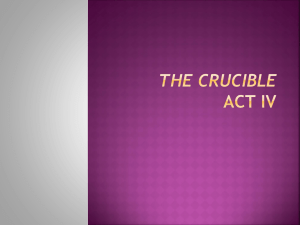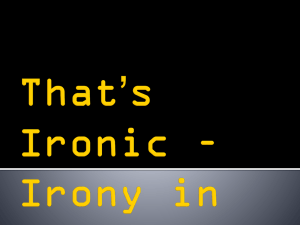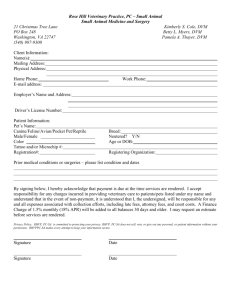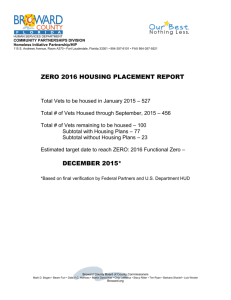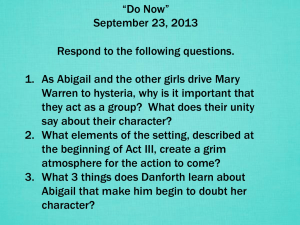3-1-13: Comparative Medicine Tour
advertisement
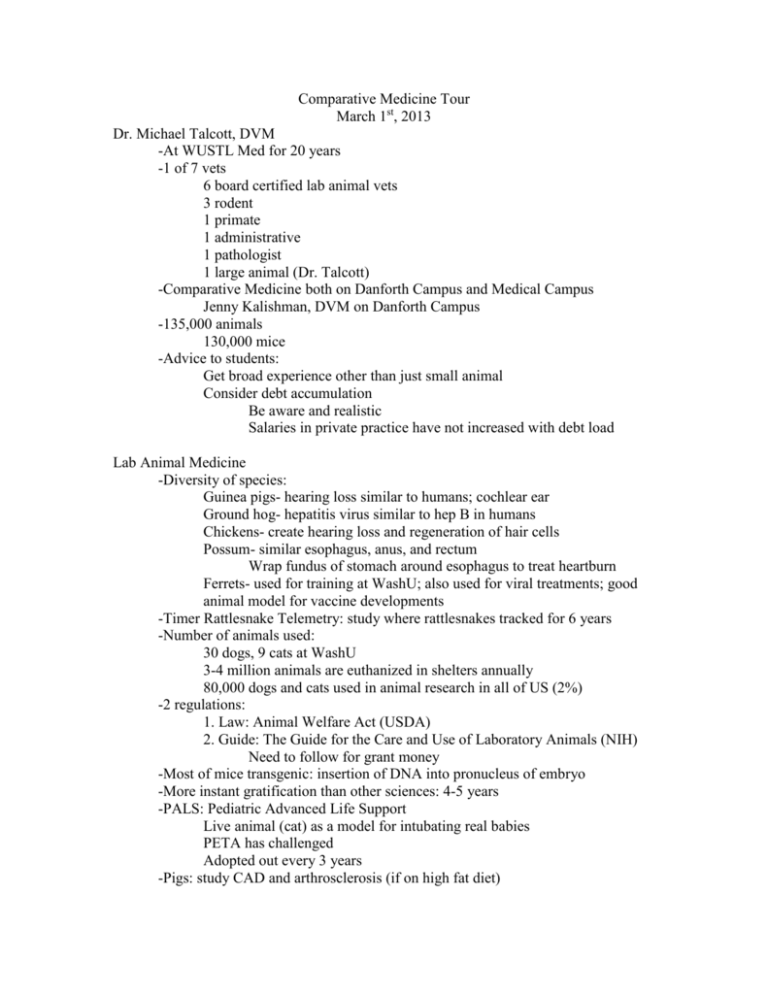
Comparative Medicine Tour March 1st, 2013 Dr. Michael Talcott, DVM -At WUSTL Med for 20 years -1 of 7 vets 6 board certified lab animal vets 3 rodent 1 primate 1 administrative 1 pathologist 1 large animal (Dr. Talcott) -Comparative Medicine both on Danforth Campus and Medical Campus Jenny Kalishman, DVM on Danforth Campus -135,000 animals 130,000 mice -Advice to students: Get broad experience other than just small animal Consider debt accumulation Be aware and realistic Salaries in private practice have not increased with debt load Lab Animal Medicine -Diversity of species: Guinea pigs- hearing loss similar to humans; cochlear ear Ground hog- hepatitis virus similar to hep B in humans Chickens- create hearing loss and regeneration of hair cells Possum- similar esophagus, anus, and rectum Wrap fundus of stomach around esophagus to treat heartburn Ferrets- used for training at WashU; also used for viral treatments; good animal model for vaccine developments -Timer Rattlesnake Telemetry: study where rattlesnakes tracked for 6 years -Number of animals used: 30 dogs, 9 cats at WashU 3-4 million animals are euthanized in shelters annually 80,000 dogs and cats used in animal research in all of US (2%) -2 regulations: 1. Law: Animal Welfare Act (USDA) 2. Guide: The Guide for the Care and Use of Laboratory Animals (NIH) Need to follow for grant money -Most of mice transgenic: insertion of DNA into pronucleus of embryo -More instant gratification than other sciences: 4-5 years -PALS: Pediatric Advanced Life Support Live animal (cat) as a model for intubating real babies PETA has challenged Adopted out every 3 years -Pigs: study CAD and arthrosclerosis (if on high fat diet) -Xenotransplantation: species to species transplants -Most animals euthanized for tissue collection -Today, many institutions doing the actual animal studies in other countries to bypass FDA -Intuitive Surgical Da Vinci Surgical System: removes tremors from surgeon’s hands; predominately used in prosthetics and coronary -Interventional Cardiology Use to diagnose and treat arrhythmias Procedures on heart without opening up Uses a magnetic field system, Niobe System
